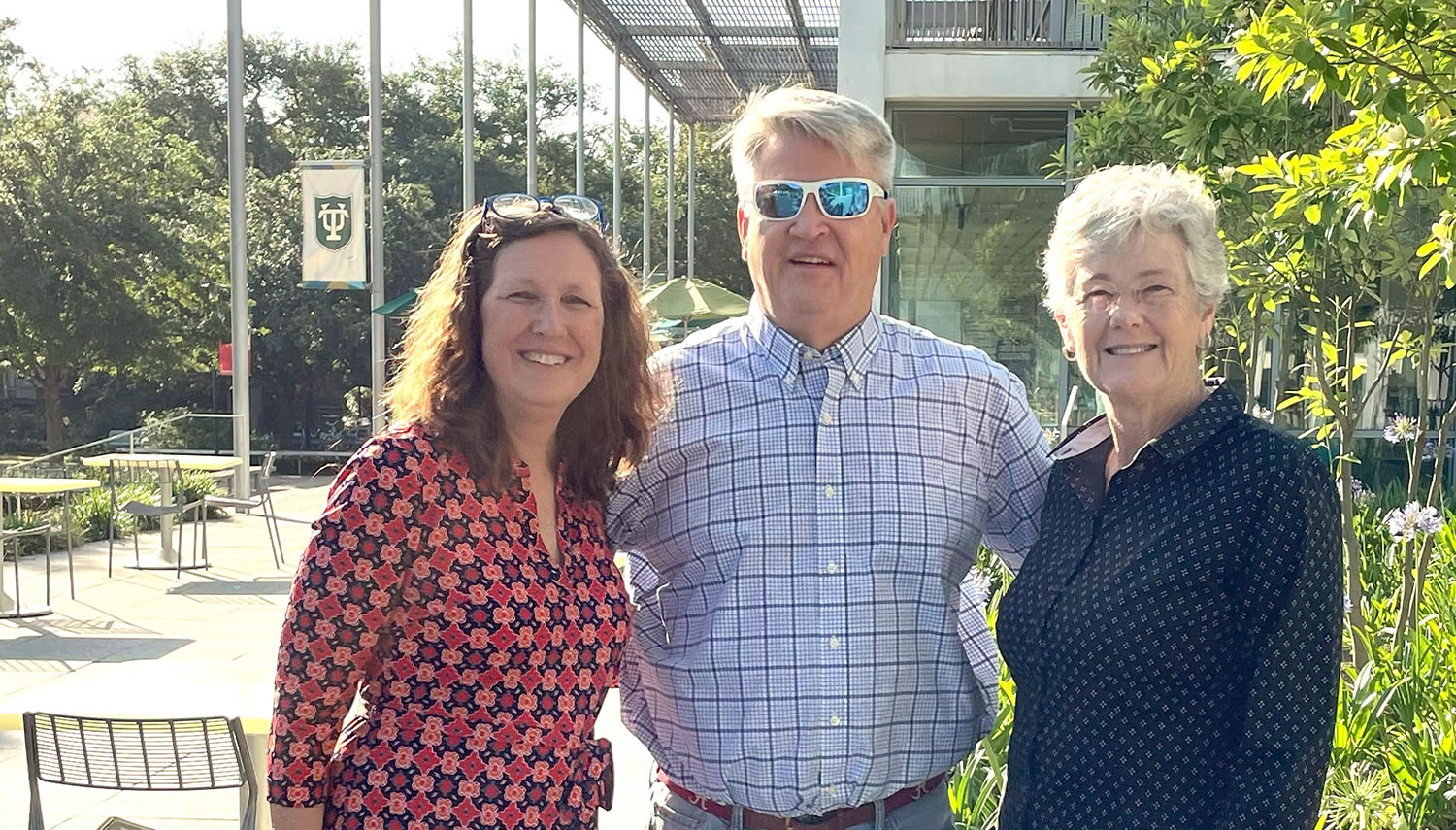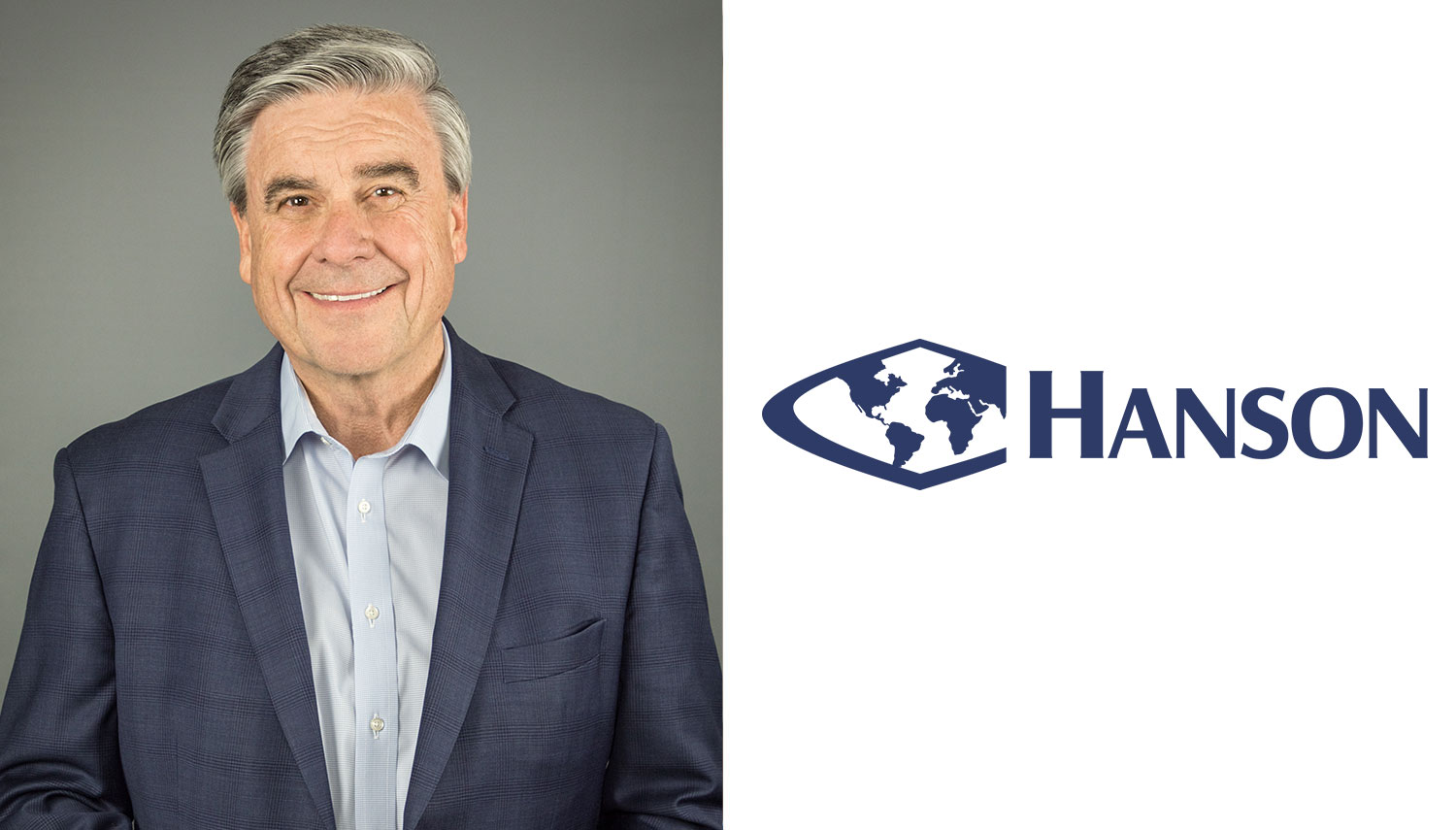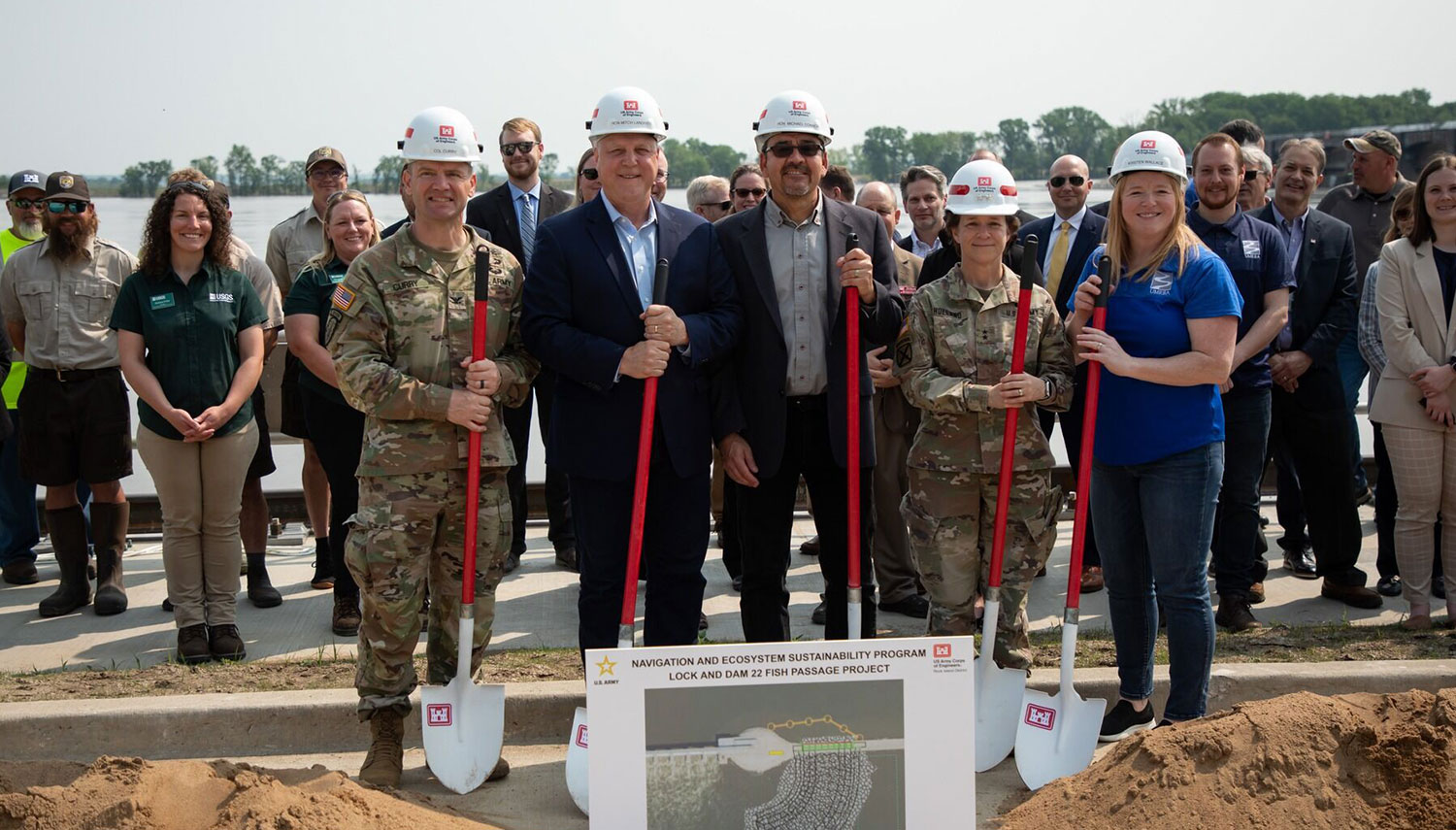News & Updates
Recent updates from America’s Watershed Initiative.News & Updates
Recent updates from America’s Watershed Initiative.AWI Newsletter – April-June 2023
Elevating Science in the Lower Mississippi River Basin

Kim Lutz, AWI; Sean M. Duffy, Sr., Big River Coalition and former AWI Board; and Dr. Barb Kleiss, Tulane University and AWI Board.
On April 27 and 28, researchers, government and NGO scientists, managers and students attended to learn about ways we can work together in the Lower Mississippi River Basin. The 200+ individuals who gathered on Tulane’s Campus or participated virtually had the opportunity to learn about topics such as water quality, ecology, hydrology and water quantity and quality monitoring.
The Lower Mississippi River Science Symposium, now in its third year, provides a forum for leaders in the field to share research, ideas, and needs with a goal of building constructive collaboration. Each year the symposium focuses on three areas: optimizing the data collection network, exploring the next generation of models, and outlining key applications of the data and models for management decisions.
Dr. Barb Kleiss, an AWI Board member and research professor at Tulane’s School of River and Coastal Science, and AWI Executive Director Kim Lutz sit on the Leadership Committee for the symposium along with colleagues from The Army Corps of Engineers, The Nature Conservancy, U.S. Geological Survey, National Oceanic and Atmospheric Administration and the Lower Mississippi River Conservation Committee.

AWI Board Members Lead Across the Basin and the Nation
Dr. Larry Weber, Director of IIHR, Hydroscience and Engineering at the University of Iowa, was recently appointed by the U.S. Army Corps of Engineers as a member of the Environmental Advisory Board. This Board was established by the Chief of Engineers in the 1970s as a means for the Chief to gain outside, expert, independent advice on environmental issues facing the Corps. The Board consists of 5-10 members who are eminent authorities in the field of natural (e.g., biological, ecological), social (e.g., anthropologist, community planner), and related sciences with diversity in thought.
Teri Goodmann, the City of Dubuque’s Director of Strategic Partnerships has been appointed the chair of the National Capital Planning Commission by President Joe Biden. Goodmann begins a six-year term as the at-large Presidential appointee on the Commission, which oversees federally owned buildings and land in Washington, D.C., and the surrounding National Capital Region, along with guiding the overall planning of the development of the capital. Teri has indicated that her focus will be to make climate resilience and equity a top priority in the work of the commission.
Deb Calhoun and Dan Mecklenborg traveled to the National Mississippi River Museum and Aquarium in Dubuque, Iowa in June to visit the National Rivers Hall of Fame. Deb (2019) and Dan (2022) were honored with the Hall of Fame’s National Achievement Award, the highest honor presented to those people who are making significant contributions to America’s waterways. They were joined at the Museum by Teri Goodmann, a lead developer of the National Mississippi River Museum & Aquarium, a Smithsonian Affiliate, the largest cultural and environmental interpretive center for the Mississippi River Basin.
Charlie Hess was selected as a Task Force Member of the Regional Risk and Resilience Program, Savannah River Pilot (along with members from the Corps, Department of Homeland Security, Clemson University, and the Federal Emergency Management Agency). The goal of the pilot program is to provide a watershed-wide resilience analysis of critical infrastructure and their interdependencies that allows us to determine the impacts on USACE projects. This effort will also assist federal agencies and low-capacity communities to assess potential risk, critical infrastructure interdependencies, and to develop risk mitigation options.
Donor Council Spotlight

Sergio “Satch” Pecori is the chairman and CEO of Hanson Professional Services
Established in 1954, Hanson Professional Services Inc. provides planning, engineering, and environmental services to clients throughout the U.S., with an emphasis on civil works and infrastructure projects. Its expertise in water resources allows the company to provide navigational and flood damage reduction projects to government and private clients. Hanson emphasizes context-sensitive solutions and has provided sustainable design on projects such as the water control structure for The Nature Conservancy’s Emiquon Preserve, one of the largest wetland restoration sites in the U.S. With this water control structure, the wetland was the first in North America to reconnect to its water source, the Illinois River.
Can you tell us about how and where you work in the Mississippi River Watershed?
Hanson has offices and has completed flood damage reduction, navigation, and other infrastructure projects throughout the Mississippi River Watershed. We are particularly active in the communities surrounding our offices in Chicago, Rockford, Peoria, Springfield, St. Louis, Kansas City, Louisville, Nashville, Dallas, Austin, and Corpus Christi.
Sustainability is a key issue for organizations today. Tell us a bit about your efforts in sustainability.
Wise stewardship of human and environmental resources is critical for any organization contributing to society’s advancement. As an employee-owned company, Hanson’s mission is to help our clients succeed in meeting their goals by providing quality planning, engineering, and environmental services. Additionally, we provide our clients with environmentally sensitive options through our knowledge and implementation of sustainable design practices.
Many of our projects involve protecting the natural environment in the vicinity of work sites. Reconnecting a creek in Washington State to its original floodplain to improve sustainability of fish populations; helping with restoration of the Emiquon Preserve, the second-largest project of its kind in the U.S. (after the Florida Everglades restoration); reusing asphalt and other materials during construction; and designing buildings to meet Leadership in Environmental Energy and Design certification requirements are just a few examples of ways we have honored the environment through our work.
You are a member of AWI’s Donor Council. Why did you decide to join?
As a firm representing a group of almost 600 employee-owners, Hanson embraces many of the same initiatives that AWI advocates. AWI is a collaboration working with hundreds of organizations to find solutions to the challenges of managing the Mississippi River and the 250 rivers that flow into it. Our firm believes this is an important priority for the future of our nation. Further, it is difficult to quantify the progress of this type of goal without measurement. AWI is the only group creating a periodic report card on the status of the watershed across all sectors. This is important to our firm, our employees, and our nation, especially those who live within the 31-state Mississippi River watershed.
Ground-Breaking Work on the Mississippi

Col. Jesse T. Curry, USACE, Commander and District Engineer, Rock Island District, Mitch Landrieu, Senior Advisor and Infrastructure Coordinator, Michael L. Connor, Assistant Secretary of the Army (Civil Works) , Maj. Gen. Diana M. Holland, USACE Mississippi Valley Division; Kirsten Wallace, Exec. Director, Upper Mississippi River Basin Association and AWI Board and 100’s of partners celebrate at Lock and Dam 22.
It was great to celebrate the groundbreaking of a migratory fish passage improvement project at Lock and Dam 22 in May. When completed, this project will increase access to upstream habitats for native migratory fish populations. The project was developed as part of the Navigation and Ecosystem Sustainability Program (NESP) and would be the first of its kind on the Upper Mississippi River. Kudos to the many people who made this project possible, including AWI Board Member and UMRBA Executive Director, Kirsten Wallace.
AWI’s Executive Director Kim Lutz also joined the 100+ in attendance at Lock and Dam 25, for its groundbreaking ceremony for the addition of a 1,200-foot lock to the site’s existing original 600-foot chamber. The project, also part of NESP, will improve the river’s reliability by adding redundancy with two lock chambers and will reduce costs for shippers and consumers by increasing efficiency of lock transit times. Kim was joined at the event by current and former AWI board members Rachel Orf, Robert A. Sinkler and Kirsten Wallace.

Quick Takes
- Attended the Interstate Council for Water Policy Annual Meeting in Washington, DC. Attendees included water resources managers from across the country. We learned from interactive sessions with leadership from the Corps’ Civil Works, the Department of the Interior/ U.S. Geological Survey, National Oceanic and Atmospheric Administration, National Aeronautics and Space Administration, and the House Transportation and Infrastructure Subcommittee on Water Resources and Environment for Roundtable discussions.
- Secured funding for two projects from the Midwest Climate Action Team to explore 1) the processes and policies supporting Nature Based Solutions (NBS) to Climate Change and 2) Communications techniques that will educate key constituents about NBS in agriculture and motivate adoption. This work will be done in collaboration with American Farmland Trust and the Illinois Council for Humanities.
- Met with the Regional Risk and Resilience Program Savannah River Pilot Team to discuss potential synergies between our work streams.
- Attended the Natural Capital Roundtable hosted by McKinsey and The Nature Conservancy, discussing opportunities and obstacles to adopting nature-based solutions projects.
- Met with the leadership of eight multi-state alliances to discuss the Mississippi River Basin Partnership Initiative – a proposed federal, state, and private alliance to bring multi-benefit collaboration around key issues to the watershed.

